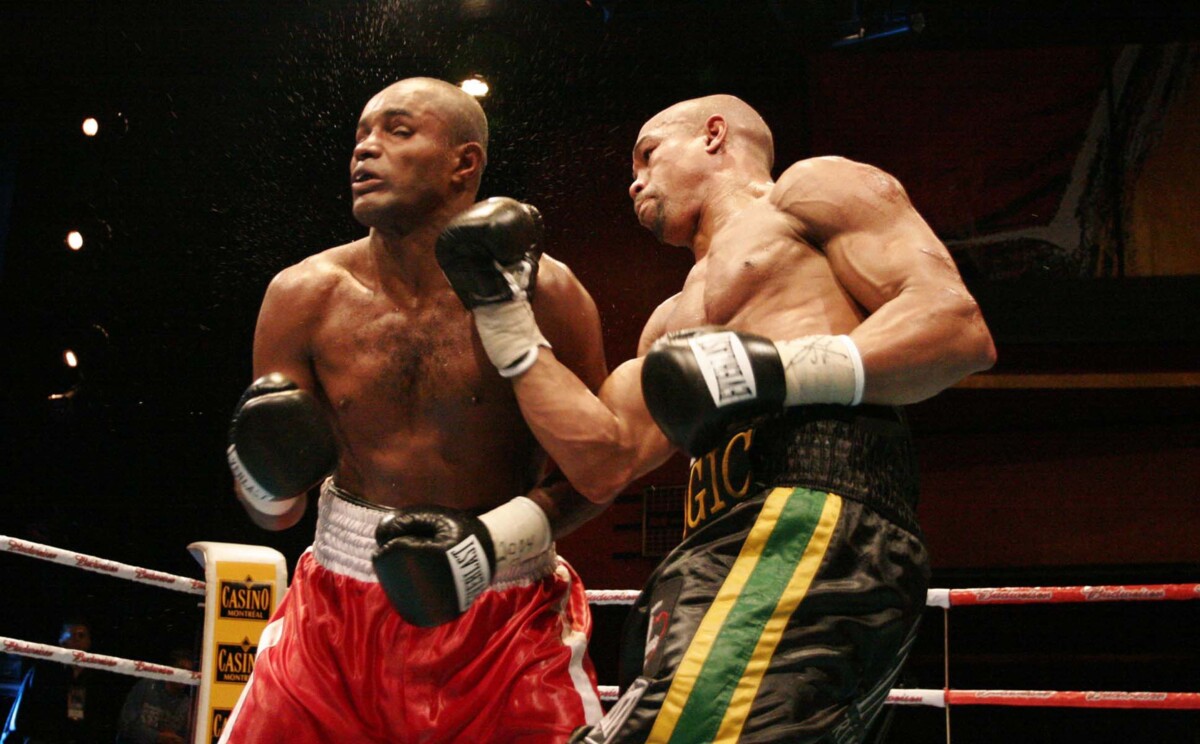How did Concordia alumnus Otis “Magic” Grant perform at the highest level while still in school?
Who would’ve known that Concordia University harboured sporting greatness, and not even under the Stingers name? For Concordians who aren’t boxing fanatics or old enough to have sat with him in class, chances are you weren’t aware that the middleweight champion was a full-time student on this campus.
Otis “Magic” Grant grew up as a multi-sport athlete in Ville Saint-Laurent. He played on Vanier College’s basketball team, while fighting professionally to pay for his tuition. He figured he should obtain a higher level of education “to secure [his] future outside the boxing ring”, in case his career took a dive. “You can’t always put your eggs in one basket, especially in professional sport, because your career can be over in one night,” Grant said.
Grant enrolled at Concordia in the fall of 1989, majoring in recreation and leisure. A month into his first semester, he was being broadcasted on ESPN, beating his opponent Art McCloud by technical knockout.
Although a boxing career was his ultimate life goal at the time, it wasn’t his priority—graduating came first. That being said, you can’t be great without practice and dedication. He would be at school from 9:00 a.m. to 4:00 p.m., get to the gym by 5:30 p.m. and be showered off at home doing homework by eight. If he had no class in the mornings and had a project to get done in the evening, he would go for a run and work on cardio before school.
“If I had a bad day at school, get a bad grade or fail an exam, it’s the best way to get rid of stress. Physical activity is the best way to counteract the stress that life might bring you. Physical activity has always been my stress reliever,” Grant said.
The champ debuted on Canada’s senior national team at the young age of 17. To maintain status on the team, a fighter must represent the team in at least one international tournament yearly. This had Magic flying around the world, usually to Europe, while he kept up with his academics by regularly checking course syllabi. Outside of training, fighting, and press conferences, he would study in his hotel room while the rest of the team was sight-seeing.
“The guys on the senior team normally were 19+. So I was a young kid travelling with some grown men of 25, 26, 28 years old. But you know, they had no issue. I did my work, I stayed in my room,” he explained.
For Grant, the discipline required in the sport of boxing had intertwined with that required to get higher education. “You’re the only one in the ring, you have no teammates, you can’t call a timeout. To have to be in shape, you have to put the work in. Doing any sport like this will teach you life lessons. You learn that if you put the work in, hard work will pay off,” he said.
The athlete had friends take notes for him in instances when he missed a class during a trip. Grant had become skilled at finding solutions around academic disadvantages. For example, as a self-proclaimed “terrible typer.” He would get his buddy Steve and his girlfriend Betty, now his wife, to type out his hand-written assignments.
Photo Credit: Herby Whyne
Of his 42 professional career fights, 15 were fought during his time at Concordia—and he won all of them, including nine by knockouts. His most important fights involved title contention, such as his WBC intercontinental super middleweight title against Jaime Ollenberger, Canadian middleweight title against Dan Sherry that earned him a top-six ranking in North America, and a North American Boxing Federation (NABF) title win against Gilbert Baptist. The latter performance earned him a top-10 world ranking.
Before graduating from Concordia, Grant was offered multiple world title shots, but he turned them down in sacrifice for a diploma. “I waited until I was a little bit older,” he said. The professional boxer only seized the opportunity when the WBO middleweight title was vacated in ’97, as he beat Ryan Rhodes for the belt in his home town of Sheffield.
Grant was named Concordia Alumnus of the Year in 2007 for his community work through the Otis Grant & Friends Foundation, a fundraising foundation for food and clothes to be distributed to people in need, and his work as a teaching assistant and counsellor in Montreal’s secondary school system.
Grant was two accounting classes away from graduating with a business minor. His business success is apparent through his long-time boxing gym started with his brother, Howard, called “Grant Brothers Boxing” in Dollard-Des-Ormeaux. The brothers frequently plan events through BoxKO Promotions. Their latest amateur, BOXCITY 6, was held on Oct. 14.
Otis “Magic” Grant’s story is an inspiration for any student athlete, whatever the size of the goal. “If you have your priorities in order, it shouldn’t be a problem. It’s been done. Nobody can tell you you can’t do it, because I’ve done it,” Grant said.
